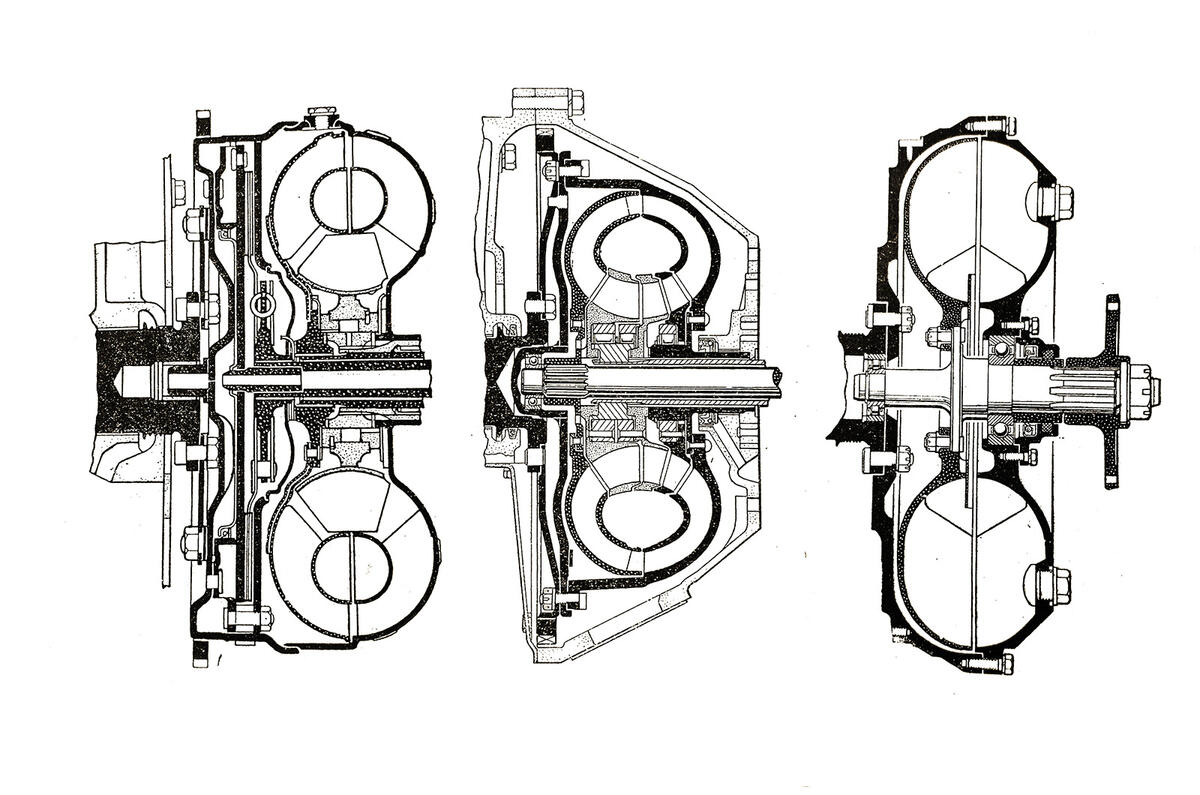Following World War 2, automatic transmissions became commonplace on American cars, prompting Autocar to ponder how long it would be before similar systems were adopted by British car makers.
“Very shortly some decision will have to be made in order that British cars can continue to hold their own against American competition,” wrote technical expert MS Crosthwaite in the magazine, in August 1950.
“There is no doubt at all that car users who regard the automobile primarily as a means of transport will no longer continue to view the conventional clutch and synchromesh gearbox with favour. Elimination of the clutch pedal would appear to be an absolute necessity.”
Crosthwaite detailed three types of automatic transmission – the semi-automatic overdrive, a four-speed ‘planetary’ gearbox and a fully automatic torque converter – and assessed their suitability for the British market.
“Two factors are of vital importance when considering a transmission for British cars, namely, what may be considered ‘reasonable’ efficiency and whether fully automatic control is desirable,” he wrote.
“Behind any consideration of these arguments, however, lies the question of environment and its effect upon the type of vehicle most suitable.
“In many ways the narrow twisting roads of Great Britain, with their high traffic density, have no counterpart. Thus ease of gear changing is essential, although the actual percentage of the life of the car spent in intermediate gears may not be unduly high. Nevertheless, it will be enough to show up in terms of fuel consumption any relatively low transmission efficiency.”
At the same time, he identified two factors contributing towards the need for a reconsideration of gear ratios.
“These are the reduced drag of modern coachwork, resulting in the possibility of attaining higher road speeds with a given engine power, and the realization that in other countries, where high cruising speeds can be sustained for long distances, a higher top gear ratio is desirable in order to keep engine speeds reasonable.”
Ultimately, Crosthwaite felt that other technical elements of the car could play a more important role in improving fuel economy than transmission evolution.“No transmission is an end in itself. The ideal is to have so much surplus engine power that nothing is required beyond a device to provide a smooth start,” he wrote. “While this desirable state is approached by the large-capacity American car, it cannot be expected in other countries where fuel is expensive.





Join the debate
Add your comment
Stigma
Why do VW Persist with DSGs?
How many gears do you need. I
How many gears do you need... Depends!
With an automatic, does it matter how many gears it has?
Our 320d has the excellent ZF 8-Speed automatic. Most of the time when driving it, I am not aware of which gear it is in - and, importantly, I don't care. Let me explain: what I mean is that the vehicle always chooses the right cog for the conditions, so that I am never left wondering where my power is, or why the engine is revving so high. It is truly an amazing transmission - the first automatic I have experienced where I do not feel I have to second guess what the hell it is doing. There is just no frustration with it - for the first time in driving an auto I am not left wishing I had a manual.
In theory the 'perfect' automatic transmission is a steeples CVT, since this allows an infinite number of ratios, so that the ratio is always matched to the engine revs. That is the theory. In my experience CVTs are crap. I have only driven two vehicles with a CVT - some Mitsubishi buzz box thing in Sydney a few years ago, and a Mercedes B-Class about 4 years ago. Both were awful - underpowered, noisy, unresponsive and just dumb. I am sure there must be better CVTs out there, but I am yet to experience one.